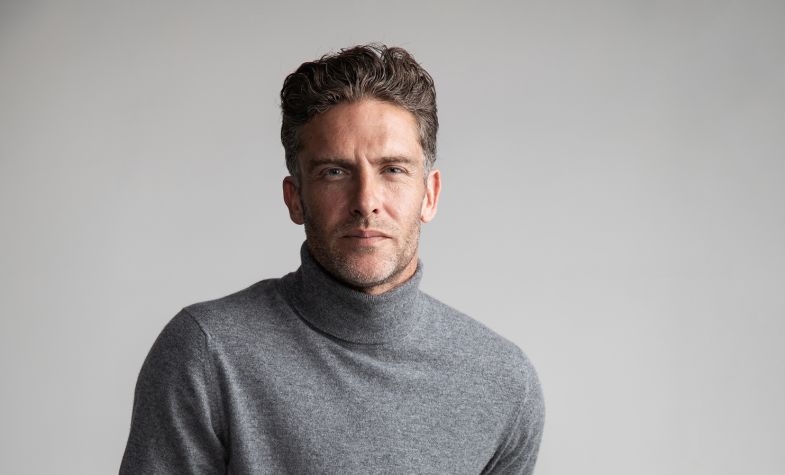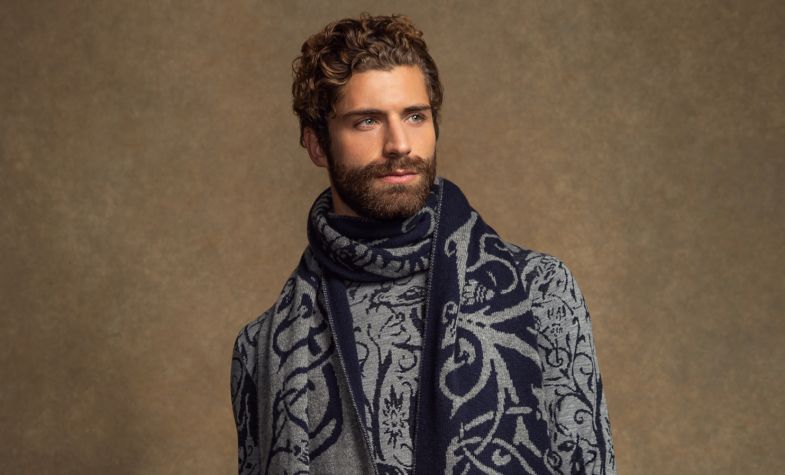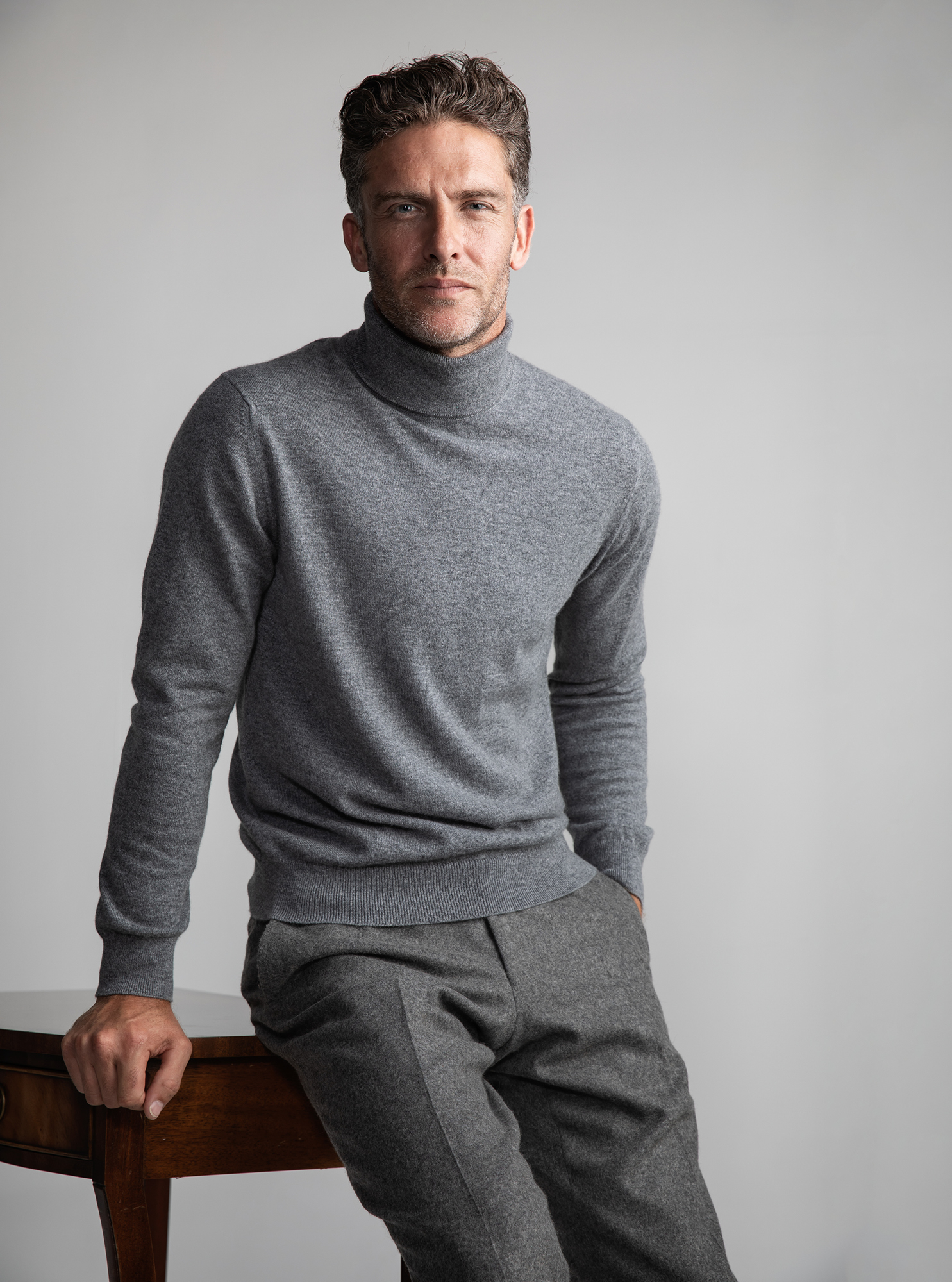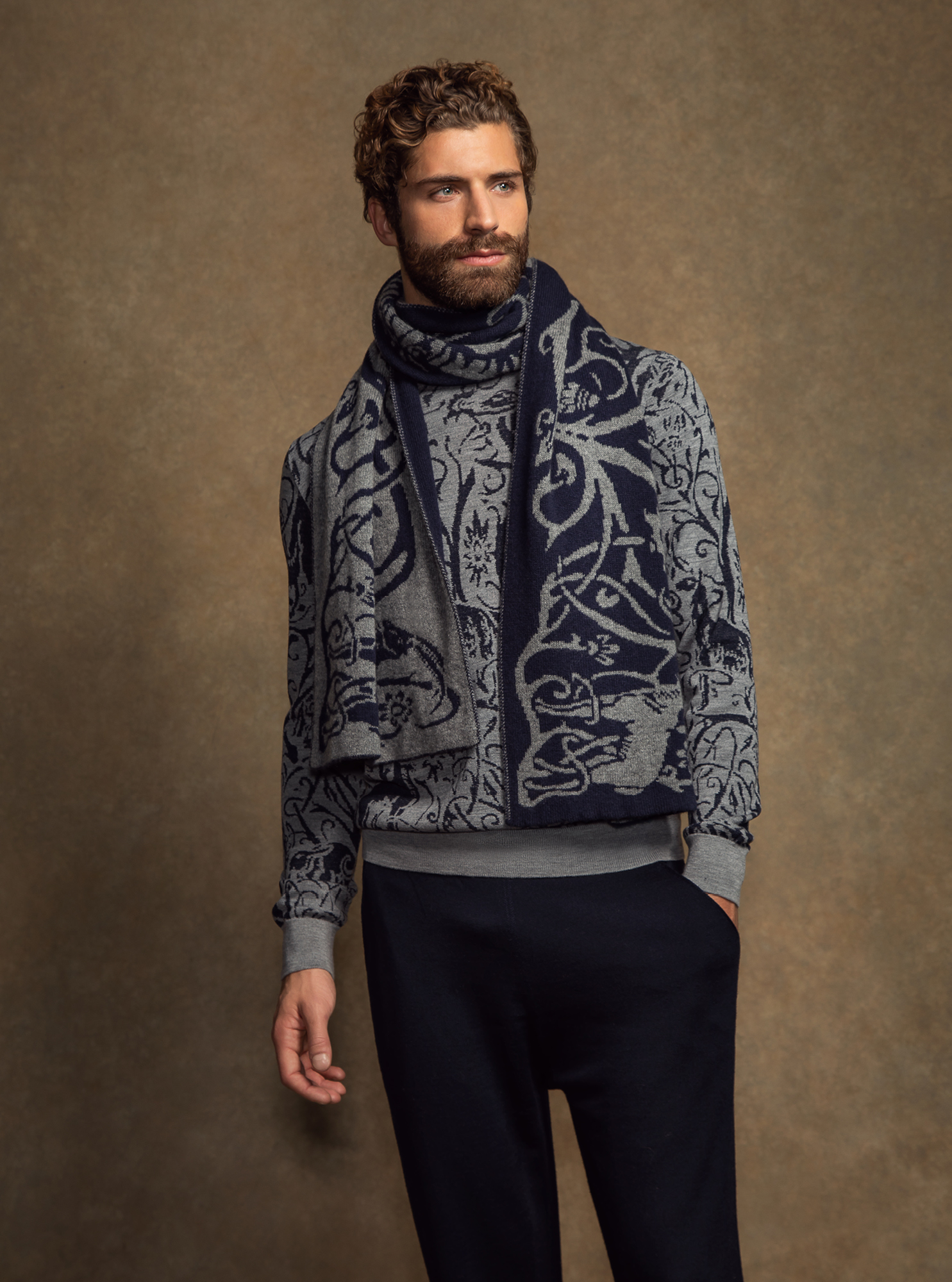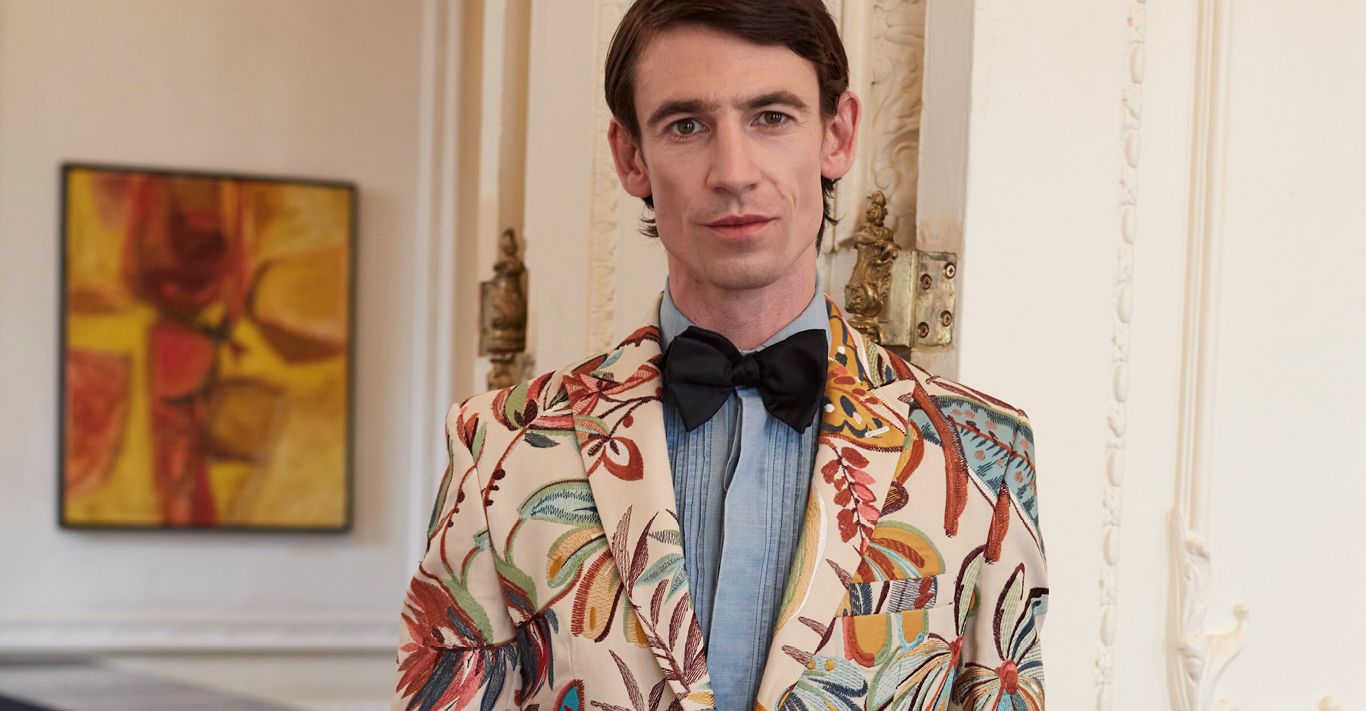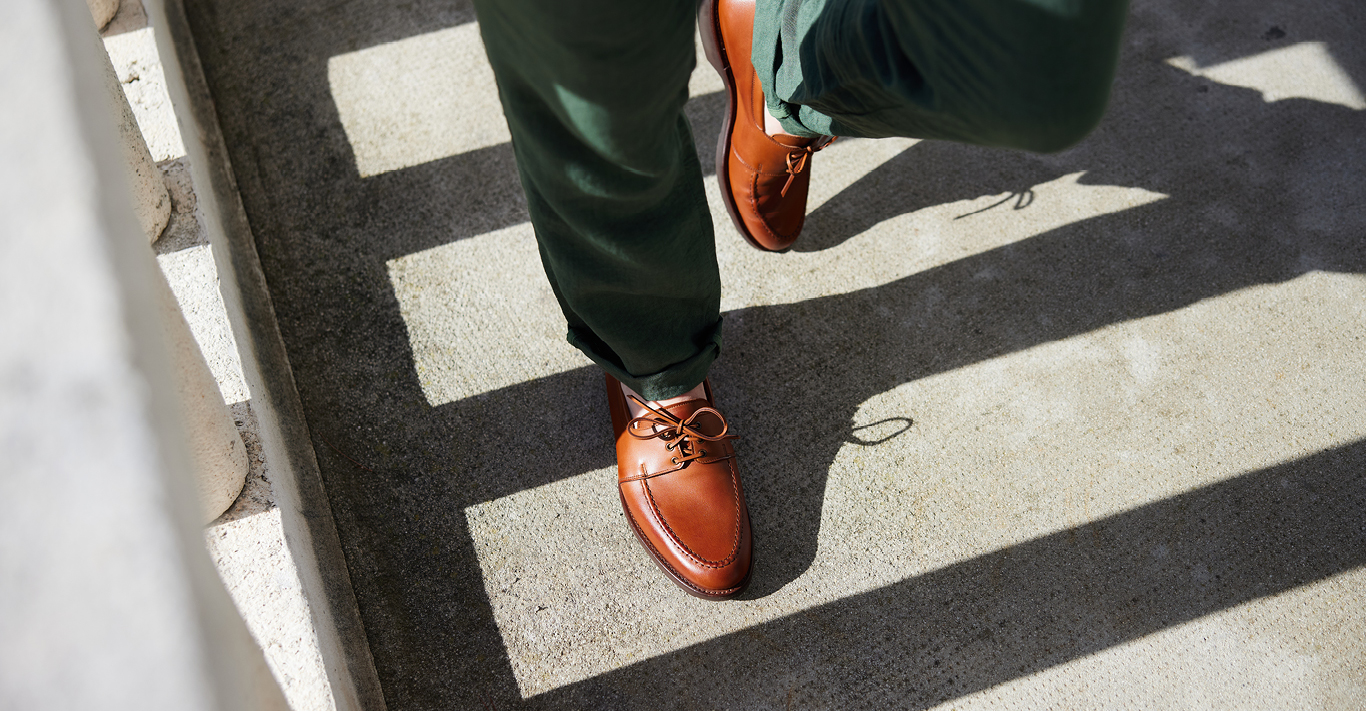WORDS
Peter Howarth
Dating back to 1797, and situated up in the Scottish Highlands, Johnstons of Elgin is most famous for its cashmere knitwear. In recent years, it has made great strides in establishing its fashion credentials. Experts in knitting techniques, Johnstons is contracted by some of the world’s most famous fashion brands to make knitted products and fabrics for them – we are unable to say who, but you’d be impressed. Spurred on by this, under the creative direction of Alan Scott (former-Donna Karan and Loro Piana), the Scottish firm has been expanding its repertoire under its own label, making some exciting collections for men and women in which pattern and colour play a part in a modern interplay of knitted and woven layers and textures.
Which is why it is interesting that this Autumn/Winter sees Johnstons return to its roots with a collection of classics. Scott explains that the idea came from the fact that although the more fashionable and unusually designed pieces have placed the firm on the fashion map and seen it become a regular participant in London Fashion Week, the core of the collection, for decades, has centred on the staples of: crew-neck, V-neck, cardigan and polo-neck.
‘I started to think about what a classic is,’ explains Scott. ‘The word might be the problem – it conjures up the idea of something traditional and therefore, perhaps, uninteresting. And yet what if we could dispel that myth?’
Scott realised that people look to classics all the time, year after year, for comfort, confidence and security. They become a signature, a regular expression of character. ‘I, for example, live in my cashmere crew-necks,’ he says. So what if instead of regarding the classics in the collection as the neglected basics, he were to revisit them, refresh the designs, introduce new colours and place them centre stage?
‘I realised that these pieces are what wardrobes are built around – for men and women. And that they are trans-seasonal, and multi-generational. Your grandfather might wear the same cashmere or merino roll-neck as you, but he will interpret it with a pair of flannel trousers and a tweed jacket, while you might pair it with Japanese denim jeans and trainers.’
So Scott literally went back to basics and took all the Johnstons classic cashmere pieces and re-engineered them. The use of that verb here is intentional, as this is technical stuff. For example, Scott explains how the ribs were kept at the same thickness for the 12-guage cashmere styles, but the tension was loosened to make the shape less clingy and old-fashioned and more ‘modern and streamlined’; and how he changed the construction of the rib and how it links to the neck, so it’s not so heavy and thick, though it has ‘a depth that is a little bit deeper so it looks more modern’.
To see if his new take would work, Scott instigated a global wear-test, in which men and women of different body shapes and sizes tried the garments. The result was a reassessment of what is called the grading, how sizes change. In particular, new smaller sizes were created for Asian customers.
The overhaul of the classics is for both men’s and women’s styles, where the women’s pieces mirror those in the men’s collection with the notable addition of the twin-set (T-shirt with cardigan). Again, for women, the attention has been on bringing the fit up-to-date.
Then there was the issue of colour. Classics are often simply offered in traditional hues, and Scott wanted to change this. He has created a foundation of elegant mid-greys – different tones of the same colour that work effortlessly with one another – and ‘midnight navy’, ‘classic camel’, the red that the firm uses for its Stewart tartan and, of course, black. These will always be available. Then, seasonally, he will add some highlight hues to ring the changes. For this winter these include amber, orangy-red ‘harissa’, turquoise and deep wine ‘cabernet’.
The final development has been the addition of superfine merino wool to the classics range. This fine quality (15-guage) allows for the creation of lighter-weight pieces for warmer weather. However, there is another aspect to the merino pieces that makes them far less ‘classic’ than they might first appear. Using a state-of-the-art Japanese knitting machine, Scott is able to create merino designs that have no seams. They are literally knitted in one piece. Apart from resulting in a very special and unusual garment, this has the added benefit of being very efficient, with no wastage, which is good for environmental friendliness.
‘We will add new classics to the range over time,’ explains Scott. ‘A thick-ribbed cashmere crew-neck would be a good idea, or a cable-knit.’ But he also has an eye on creating entirely new styles that will become the classics of the future. ‘One of my favourite pieces, not yet in the classics collection, but surely it will be soon, is a knitted merino wool jacket,’ enthuses Scott. Made on the Japanese wonder-machine, this garment is again, literally seamless.
‘It looks like a proper tailored blazer, but is knitted without seams,’ explains Scott. ‘This is a whole tailored garment that comes off the machine finished. The shape has been developed ergonomically – so it’s not just a straight cut like a cardigan; it has all the suppression of the fit of a jacket. It really is a revolutionary step forward.’
Who said classics were predictable?

